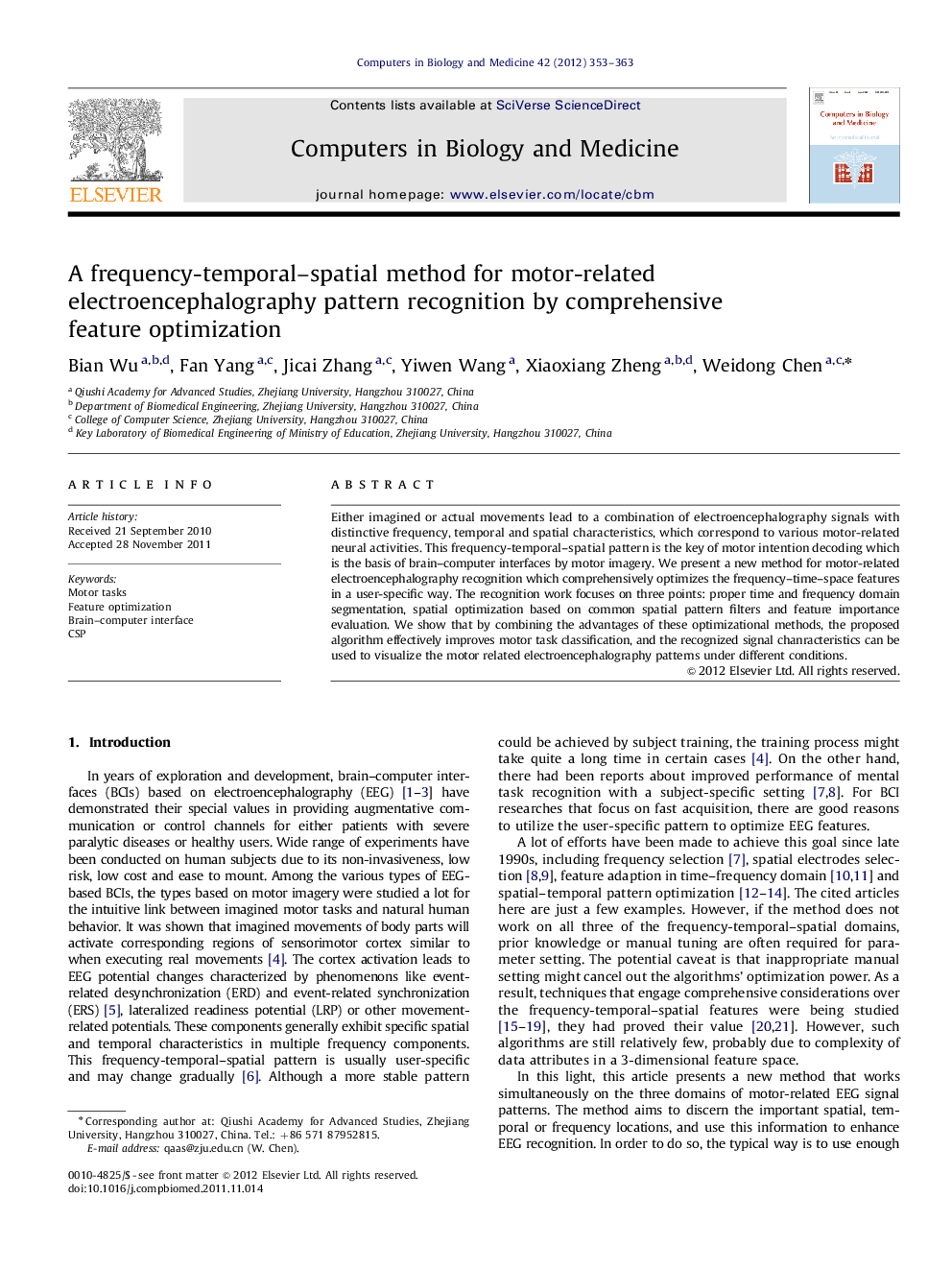| Article ID | Journal | Published Year | Pages | File Type |
|---|---|---|---|---|
| 505268 | Computers in Biology and Medicine | 2012 | 11 Pages |
Either imagined or actual movements lead to a combination of electroencephalography signals with distinctive frequency, temporal and spatial characteristics, which correspond to various motor-related neural activities. This frequency-temporal–spatial pattern is the key of motor intention decoding which is the basis of brain–computer interfaces by motor imagery. We present a new method for motor-related electroencephalography recognition which comprehensively optimizes the frequency–time–space features in a user-specific way. The recognition work focuses on three points: proper time and frequency domain segmentation, spatial optimization based on common spatial pattern filters and feature importance evaluation. We show that by combining the advantages of these optimizational methods, the proposed algorithm effectively improves motor task classification, and the recognized signal chanracteristics can be used to visualize the motor related electroencephalography patterns under different conditions.
